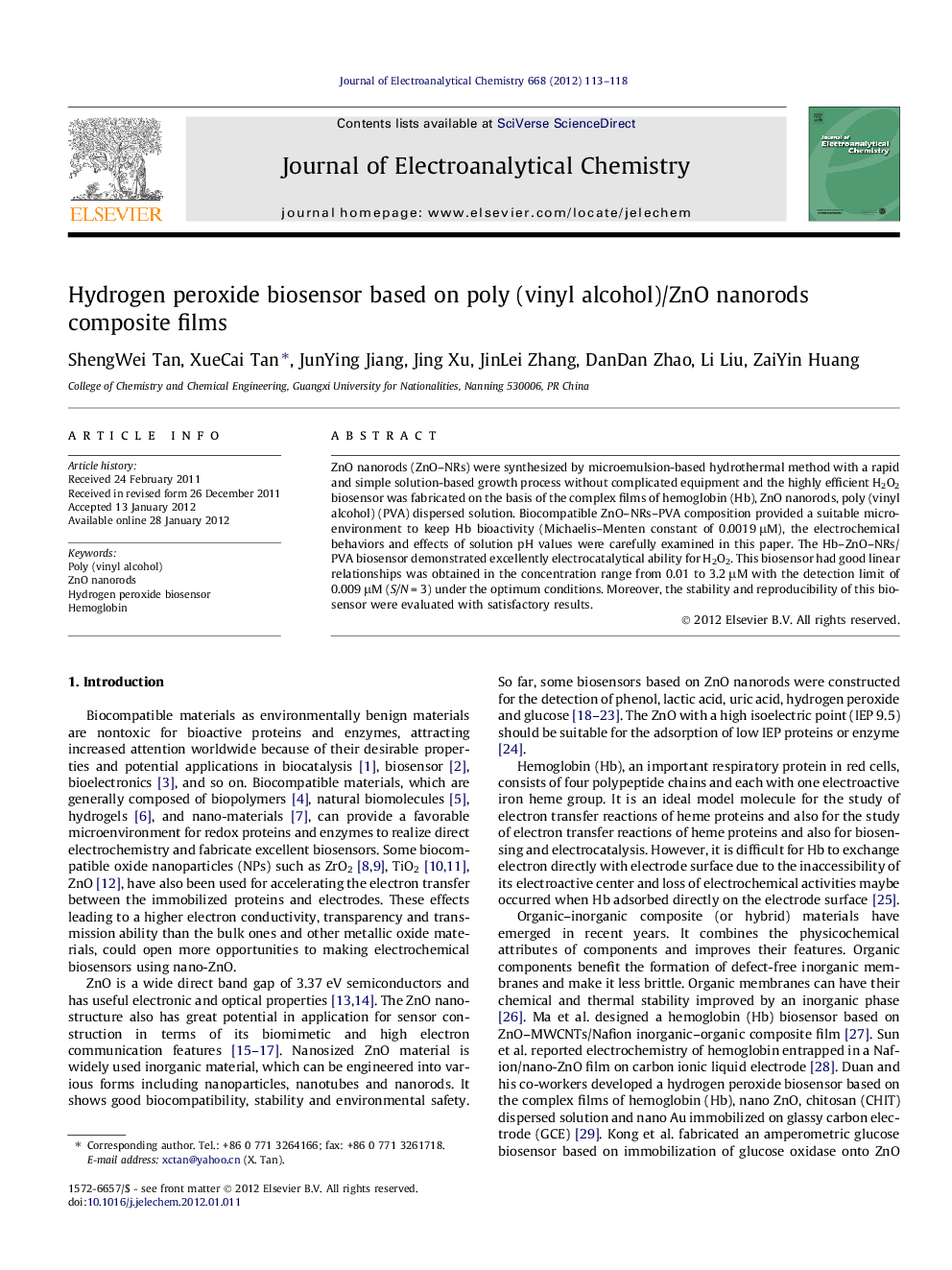| Article ID | Journal | Published Year | Pages | File Type |
|---|---|---|---|---|
| 219412 | Journal of Electroanalytical Chemistry | 2012 | 6 Pages |
ZnO nanorods (ZnO–NRs) were synthesized by microemulsion-based hydrothermal method with a rapid and simple solution-based growth process without complicated equipment and the highly efficient H2O2 biosensor was fabricated on the basis of the complex films of hemoglobin (Hb), ZnO nanorods, poly (vinyl alcohol) (PVA) dispersed solution. Biocompatible ZnO–NRs–PVA composition provided a suitable microenvironment to keep Hb bioactivity (Michaelis–Menten constant of 0.0019 μM), the electrochemical behaviors and effects of solution pH values were carefully examined in this paper. The Hb–ZnO–NRs/PVA biosensor demonstrated excellently electrocatalytical ability for H2O2. This biosensor had good linear relationships was obtained in the concentration range from 0.01 to 3.2 μM with the detection limit of 0.009 μM (S/N = 3) under the optimum conditions. Moreover, the stability and reproducibility of this biosensor were evaluated with satisfactory results.
► We have synthesized ZnO nanorods by microemulsion-based hydrothermal method. ► We have fabricated he highly efficient H2O2 biosensor. ► The Hb–ZnO–NRs/PVA biosensor demonstrated excellently electrocatalytical ability for H2O2. ► Comparing with previously works, the biosensor presents good analytical performance in the determination of H2O2. ► Biosensor have good the stability and reproducibility.
